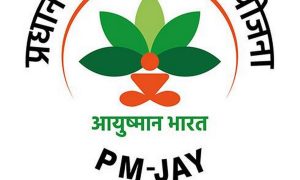The Union Budget is eagerly anticipated every year – by the common man, the rich, corporations, partnership firms, stock market investors – for the significant impact it has on their finances.
The government has been consistent with taxes and rates and has stayed away from making small incremental changes. This is the year when benefits should be offered to increase disposable income – we are emerging from the shadow of Covid-19 pandemic and high inflation – every rupee added back to the wallet of the middle class Indian, will help improve savings and spur consumption.
Read More:Gold, Silver Prices Today: 25 January 2023- Check latest rates in your city
Increasing deductions or limits is a good policy – these deductions and limits should be inflation-linked, similar to indexation benefits, while computing long-term capital gains.
We have summarised a few expectations from the point of view of a common man:
Change in tax slabs and tax rates
The tax rate for individuals has not been changed since FY2017-18. Though the simplified tax regime was introduced in FY 2020-21, not many individuals have opted for the same. The government could reduce the highest tax rate from 30 per cent to 25 per cent (both under current and simplified regime) to give more purchasing power and provide some relief to salaried employees. Also, the highest tax rate could apply only to individuals earning income above Rs 20 lakh, as compared to Rs 10 lakh in the current regime.
The simplified tax regime (STR) has not received the expected response, due to loss of exemptions and deductions to individuals opting for the same. In the case of STR, the highest tax rate of 30 per cent is applicable to individuals earning income of more than Rs 15 lakh. The regime also offers tax rates of 5 per cent, 10 per cent, 15 per cent, 20 per cent and 25 per cent at different income levels.
To make the STR more attractive for individuals, certain widely used deductions such as standard deduction, Section 80C, Section 80D and housing interest loan deduction, can be considered with lower limits. This will make the STR more attractive for salaried individuals.
Home Loan Deduction
Many first-time house buyers invest in under-construction properties on grounds of affordability and take a loan which is disbursed in piece meal, in line with the construction-linked payment plan of the builder. The interest paid on such a loan is adjustable in 5 equal installments after the possession (referred to as pre-EMI interest).
Additionally, this deduction is also merged with the limit of annual housing loan interest deduction (Rs 2,00,000 per year), resulting in a loss where the interest amounts are high. Relief may be provided to interest-paying individuals by including a provision to allow for deductions during the under-construction period. It would reduce the burden of the taxpayer who is currently bearing the brunt of both the interest on loan as well as no instant deduction of such interest for the purpose of tax.
Read More; Budget 2023: More Tax Slabs Maybe Added To New Tax Regime To Woo General Public
Increase in the limit of various deductions
The government needs to revisit the threshold of these deductions as they have not been raised, to take care of increasing inflation and rising medical costs.
Standard deduction – The government should enhance the deduction to Rs. 1,00,000 from the current level of Rs. 50,000. This would increase the disposable income in the hands of taxpayers.
Section 80C – Currently, deduction under section 80C for various investments is capped at Rs 1,50,000. The government may consider increasing the exemption limit to at least Rs. 2.5 lakhs, considering the inflation rate, to reduce the burden on taxpayers, which would prompt individual taxpayers to save more. This limit has remained unchanged since 1 April 2014.
Section 80D – Deduction in respect of health insurance premiums is currently capped up to Rs 25,000 and Rs 50,000 in case of senior citizens. Considering the increase in the cost of medical insurance post Covid, the deduction limit should be increased to Rs 50,000 and Rs 1,00,000 for senior citizens.
Section 80TTA – Section 80TTA provides for deduction of up to Rs 10,000 in the hands of individuals in respect of interest on savings bank account interest. Interest on all types of bank deposits, such as Fixed Deposits, should be included within the scope of section 80TTA. Further, the limit should be increased from Rs 10,000 to Rs 50,000.
Double taxation on Provident Fund
The employer’s contribution to the Provident fund, Superannuation and NPS, exceeding Rs 750,000 and any accretions on the same, is taxable in the year of contribution. The same PF /superannuation balance, when withdrawn, is taxable if the conditions for exemption (e.g., 5 years of continuous service in case of PF) are not satisfied.
No specific provision exists under the Act for excluding the income already taxed at the contribution stage. Hence, there could be double taxation to the extent of contribution/accretion which has already been taxed. The government should provide for a specific provision in the Act, to provide tax exemption in respect of contributions already taxed earlier at the time of withdrawal.
Read More; Budget 2023: More Tax Slabs Maybe Added To New Tax Regime To Woo General Public
Taxation of Employee Stock Options
The Income Tax Act does not specify how stock options are to be taxed at the time of exercise, in case of employees who have worked in overseas jurisdictions and in India during the grant to vest period.
Read More: SpiceJet announces Republic Day sale with fares starting at Rs 1,126; check details
There are judicial precedents which have held that only pro-rate value in respect of number of days spent in India during the grant to vest period, is taxable in India in case of non-resident and not ordinarily resident employees. The Act should specifically provide for taxation of stock options in case of mobile employees, to mitigate litigation.
Simplified capital gains regime
Read More: New guidelines for Aadhaar authentication
The current capital gains taxes involve different rates and different periods of holding for different types of securities/asset classes. The government may consider simplifying the same for the common man.
The above suggestions are not radical reforms – they aim to offer some relief to the taxpayer and offer them the hope that the Indian tax laws and limits will keep pace with the times.





































